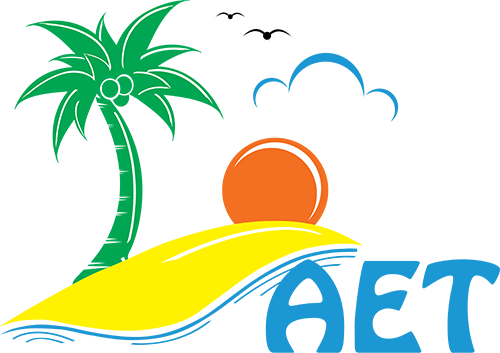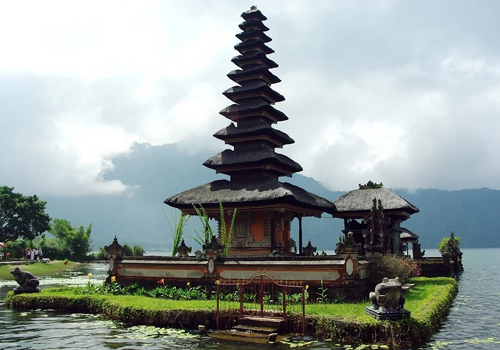Cambodia Tours
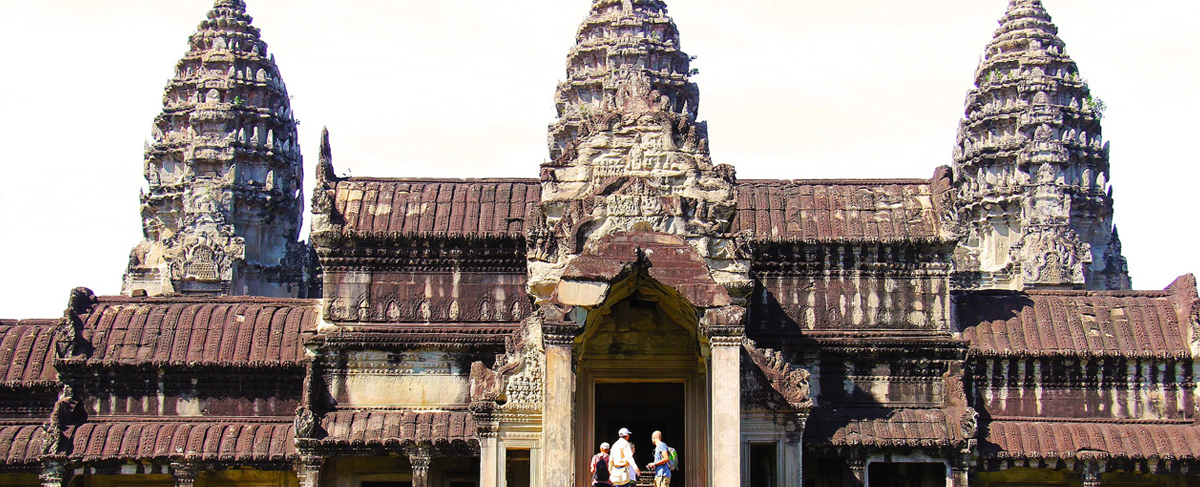
| Tour Code | |
| Tours Destination | Cambodia |
| Duration | 21Days 20Night |
| Nature of Tours | Flavours of Cambodia |
Over Views
Related Tours
Price of Tours
Upon Request
Inclusions
- All land sightseeing and transportation
- Accommodation in sharing room
- English speaking local guide
- All entrance fees
- Boat trip in Tonle Sap Lake
- Pure drinking water during sightseeing
Exclusions
- Service not mentioned in program
- All Meals / Compulsory meals
- International flight ticket to Cambodia
- Visa for Cambodia currently USD30 per person
- Single room (quote separated)
- Expenditure of a personal nature
- Travel insurance (cover against all cancellation costs, medical expenses, including repatriation, in the event of accident of illness)
Photo of Tours
Itineraries
Itinerary Day by Day
Notice: Trying to access array offset on value of type null in /home1/asiaexn/public_html/wp-content/plugins/bdthemes-element-pack-lite/modules/accordion/widgets/accordion.php on line 840
Notice: Trying to access array offset on value of type null in /home1/asiaexn/public_html/wp-content/plugins/bdthemes-element-pack-lite/modules/accordion/widgets/accordion.php on line 841
Upon arrival at Phnom Penh international airport, you will transfer to hotel for check in. Overnight at hotel
Breakfast at hotel
In the morning, we explore the stunning Royal Palace complex, home to the Cambodian royal family and a symbol of the nation. We begin amid the beautiful royal gardens, landscaped with tropical plants and studded with gleaming spires. We enter the Throne Hall where the royal receptions are held and the Cambodian king’s coronation took place. We then pass the Napoleon III Pavilion made from iron, a gift from the French emperor in the 19th century.
We continue to the Silver Pagoda, named after the 5000 silver tiles covering the floor, each weighing 1kg. Inside are some of the country’s most cherished treasures, including a life-size gold Buddha studded with 9584 diamonds, the largest weighing 25 carats. There is also a delicate emerald Buddha made of baccarat crystal, which gives the temple its Khmer name of Wat Preah Keo (Temple of the Emerald Buddha).
We leave the Royal Palace and continue to the nearby National Museum, home to the world’s finest collection of sculpture from the Angkor period. The exquisite building was completed between 1917 and 1920 and features a lush courtyard garden surrounded by collections from the pre-Angkor, Angkor and post-Angkor periods. We concentrate on the incredible sandstone sculpture from Angkor, as well as the intricate bronzes.
In the afternoon, we come face to face with the horrific crimes of the Khmer Rouge. Tuol Sleng was a former high school that the Khmer Rouge turned into a centre for interrogation, torture and death. Today it is a museum of torture and serves to remind visitors of the terrible atrocities that came to pass in Cambodia. 17,000 people passed through the gates of this prison and only seven lived to tell the tale.
The Khmer Rouge were meticulous in their record keeping, photographing all the prisoners and many of these haunting black and white images are on display in the cells. Enemies of the revolution were killed here, as well as many Khmer Rouge loyalists, denounced by an ever more paranoid political party. It became a production line for killing, as those that worked within its walls were unwaveringly loyal to Pol Pot. The party did not make mistakes, so those sent here had to be guilty. The role of the prison was not to prove innocence but to confirm guilt. Tuol Sleng is a profoundly moving experience and not everyone will want to visit. However, it is key to understanding the hell into which Cambodia descended and how far it has come in the years since.
We then travel out of town to the Killing Fields of Choeung Ek. Prisoners from Tuol Sleng followed this same route to their fate. An old Chinese cemetery, Choeung Ek was turned into an extermination camp for political prisoners. The remains of 8985 people were exhumed from mass graves and are kept in a memorial stupa here. Despite the horrors of the past, it is a peaceful place to go and a tranquil spot to reflect on the tragic events that engulfed Cambodia and its people.
Breakfast at hotel
We leave Phnom Penh and travel northeast to the bustling provincial city of Kompong Cham. En route, there is the chance to pause at Skuon, affectionately known as ‘Spiderville’, where it is possible to sample the local delicacy of deep fried tarantula. We arrive in Kompong Cham mid-morning and visit the sacred hills of Phnom Pros and Phnom Srei (man and woman hill). Later we see the ‘fusion’ temple of Wat Nokor, an 11th century sandstone temple with a colourful modern wat set in its central courtyard. There are some intricate carvings at this temple and the kitsch contrast between the Hindu past and the Buddhist present is almost unheard of elsewhere in Cambodia. We then enjoy a local lunch in Kompong Cham.
We continue northeast to Kratie, a sleepy Mekong port and gateway to an encounter with the rare freshwater Irrawaddy dolphins that inhabit the upper reaches of the Mekong in Cambodia. We check into our hotel and leave some time free to soak up the atmosphere of this charming town, with its well-preserved colonial-era architecture. We spend the night in a comfortable local hotel.
Breakfast at hotel
After breakfast, we will enjoy a cycle ride along the west bank of the Mekong with our specialist local guide, We travel a few kilometres south of town to a local ferry crossing, and then pedal north on the west bank of the Mekong River through villages, stopping along the way to meet locals and be introduced to local livelihoods, including tobacco-growing, rice production, prahok and noodle-making, palm sugar collection and fruit farming. We will also stop at some pagodas along the way to find out more about local folklore and the stories associated with the Mekong River region. We will have lunch with our guide’s family in their wooden-stilted home before crossing the river again by local ferry to return to Kratie
Breakfast at hotel
After breakfast in Kratie, we travel south to the bustling provincial city of Kompong Cham, nestled on the banks for the Mekong. We pass through Cambodia’s rubber country on the way, vast plantations that were originally established by the French and are once again being redeveloped. There may be the opportunity to stop along the way and learn about how the rubber is tapped.
In Kompong Cham, we see the ‘fusion’ temple of Wat Nokor, an 11th century sandstone temple with a colourful modern wat set in its central courtyard. There are some intricate carvings at this temple and the kitsch contrast between the Hindu past and the Buddhist present is almost unheard of elsewhere in Cambodia.
After lunch, we continue to the sacred hills of Phnom Pros and Phnom Srei (man and woman hill), offering great views across the countryside. Later we journey west to the provincial capital of Kompong Thom, our base for the night. En route, there is the chance to pause at Skuon, affectionately known as ‘Spiderville’, where it is possible to sample the local delicacy of deep fried tarantula. We stay overnight in a comfortable local hotel in Kompong Thom.
Breakfast at hotel
After breakfast in Kompong Thom, we explore the impressive pre-Angkorian capital of Isanapura, known today as Sambor Prei Kuk. The first major temple city in South-East Asia, the brick temples of Sambor Prei Kuk are a peaceful contrast to their more illustrious relatives at Angkor. Visiting these ancient structures before our pilgrimage to Angkor offers a fascinating chronological insight into the development of temple architecture during the Khmer Empire. We explore the main temples here, including Prasat Tao with its elaborately coiffured lions and Prasat Sambor, with its crumbling sanctuaries.
After lunch, we continue northwest on National Highway 6. This was an old Angkor road and we stop in Kompong Kdei to see one of the ancient Angkor bridges that were built to span the rivers. Spean Praptos or the Praptos Bridge has more than 20 arches and is a spectacular sight, reinforcing the impression that the Khmers were like the Romans of Southeast Asia. We continue to Siem Reap where we check into our hotel and enjoy the rest of the afternoon at leisure.
Breakfast at hotel
We travel back in time to one of the earliest capitals in the Angkor area, Hariharilaya, now known as Roluos. We begin with a visit to the brick temple of Lolei, originally set on an island in the centre of the Indratataka baray (reservoir). This temple has some well preserved sandstone carvings and the vast stone doors are carved from a single piece of stone.
We continue to Preah Ko (sacred cow), named in honour of Shiva’s mount, Nandin. This temple owes more to the pre-Angkorian brick sanctuaries of Cambodia’s earlier Chenla empire than the sandstone behemoths that came later. Originally coated in stucco and painted, there is still some of the ancient plaster visible on the rear towers.
Finally, we encounter Bakong, the earliest of the temple mountains, which later became the signature of Khmer kings. It is a giant pyramid, its cardinal points marked by giant elephants. We climb to the summit for views over the surrounding countryside.
For those that are interested, we can offer a short diversion to the small country town of Roluos, a world away from the circus of Siem Reap. Only 10 minutes from Angkor, we help you discover the real Cambodia.
This afternoon, we travel to the mighty temple of Preah Khan or ‘Sacred Sword’, built by King Jayavarman VII in the late 12th century. Sister temple to Ta Prohm, the cruciform corridors here are impressive and there are some wonderful carvings adorning the walls, including the spectacular hall of dancers. Look out for the curious two-storey structure that is almost Grecian in inspiration. This is one of the few temples originally dedicated to Buddhism and Hinduism. The original eastern entrance was for Mahayana Buddhists, while the other cardinal points represented the Hindu trinity of Shiva, Vishnu and Brahma.
We then continue on to the elegant curves of Neak Poan. This petite temple is the ultimate ornamental fountain, its series of elaborate spouts including the heads of lions and elephants. Originally Neak Poan was on an island at the centre of vast baray (reservoir), known as Jayatataka or reservoir of Jaya.
We journey to the mountain temple of Phnom Bakheng to see the sunset cast its soft light over Angkor Wat. A winding path cuts through the jungle or there is the option of an elephant ride to the summit. This temple is the signature spot for sunset, so it can get very crowded. Please advise the guide if you want to experience sunset at a quieter location.
Overnight at hotel
Breakfast at hotel
We travel to Ta Prohm which has been abandoned to the elements, a reminder that while empires rise and fall, the riotous power of nature marches on, oblivious to the dramas of human history. Left as it was ‘discovered’ by French explorer Henri Mouhout in 1860, the tentacle-like tree roots here are slowly strangling the surviving stones, man first conquering nature to create, nature later conquering man to destroy.
After soaking up the unique atmosphere of Ta Prohm, we continue to the giant pyramid of Takeo, one of the highest temples in the Angkor area. Built at the end of the 10th century, it was never completed. Some scholars contend this was due to an inauspicious lightning strike during construction. Others have suggested the high-quality sandstone was simply too hard to carve in detail.
This morning we also visit the remains of an old Angkorian bridge which once spanned the Siem Reap river. Like the Romans before them, the Khmer kings built long, straight roads connecting the outposts of their empire and these included many magnificent bridges. There is also the option to visit the smaller temples of Chau Sey Devada and Thommanon for avid temple enthusiasts.
This afternoon, we visit the royal bathing pond of Sra Srang. No bath will ever be quite the same again when you have set eyes on this vast pool, once for the exclusive use of the king and his concubines. Originally lined with sandstone steps, we climb up on to the western terrace and meet friendly local children jumping in the water.
We walk to the first great Buddhist monastery in Cambodia, Banteay Kdei, built in 1186 by Jayavarman VII who was a Mahayana Buddhist. We explore its extensive corridors and elegant sculptures. Although it is in a ruinous state, it often receives far fewer visitors than nearby Ta Prohm, giving it a serene atmosphere.
We continue to the large stone temple of Eastern Mebon, originally located on an island in the centre of the now dry Eastern Baray (reservoir). A low pyramid, this temple has large guardian elephants on each corner. This is one of the few temples where we can understand the construction techniques of the ancient Khmers, as there are still large soil ramps on each side of the temple, showing us how they moved these heavy stones into place.
We then return to Siem Reap via the temple of Kravanh. Built entirely from brick and dating from 921, this temple was extensively restored in the 1960s. Inside the small towers are some of the best brick carving found anywhere in the Khmer empire, including a giant Vishnu.
Breakfast at hotel
Rising at the crack of dawn, we journey out to the Mother of all temples, Angkor Wat. Believed to be the world’s largest religious building, this temple is the perfect fusion of symbolism and symmetry and a source of pride and strength to all Khmers. Built in the 12th century by King Suryavarman II, this is most famous temple at Angkor. We stay at Angkor Wat to enjoy a picnic breakfast. As the crowds return to their hotels, we venture into Angkor Wat to enjoy its magnificence in peace and quiet. We begin by unraveling the mysteries of the bas-reliefs that tell of tales from Hindu mythology and of the glories of the Khmer empire. Stretching for almost one kilometre, these intricate carvings are a candidate for the world’s longest unbroken piece of art.
Following in the footsteps of the devout and the destructive before us, we then continue to the upper levels of the inner sanctuary. The final steps to the upper terrace of Angkor are the steepest of all, as pilgrims of old were to stoop on their pilgrimage to encounter the Gods. Finally the pinnacle, the sacred heart of Angkor Wat, a blend of spirituality and symmetry so perfect that few moments will measure up.
In the afternoon, we travel through the traditional village of Preah Dak to the 12th century temple of Banteay Samre. Built by King Suryavarman II, the genius behind Angkor Wat, this temple has been extensively restored. The temple is unique in that over-quarrying of sandstone led to the use of laterite for the roofed corridors. The pediments above the inner doors here include some of the most accomplished carving from the Angkor period.
We continue further north to Banteay Srei, Angkor’s ultimate art gallery. This petite pink temple is the jewel in the crown of Angkor-era sculpture. The elaborate carvings here are the finest found in Cambodia and the name translates as ‘Fortress of the Women’, thanks to the intricate detail here, considered too fine for the hands of a man.
Originally believed to date from the latter part of the Angkor period, inscriptions at the site suggest it was built by a Brahman in 967. However, some architectural historians have suggested that the inscriptions may date from an earlier structure on this site and the temple is in fact later, marking a high-water mark in Khmer sculpture.
We finish by experiencing sunset over the rice fields from the royal crematorium of Pre Rup, a classic view of the Cambodian countryside.
Breakfast at hotel
Taking a break from the temples, we travel out to the mighty Tonle Sap Lake to visit the floating village of Chong Kneas. Nestled under the hill of Phnom Krom, this floating community moves location with the waters of the lake. During the wet season when the lake swells to five times its size, the village is near Phnom Krom, but during the dry season, it moves as much as 4km from the hill.
Everything floats on water in this living fishing community. There are floating schools, floating shops, floating petrol stations, even floating karaoke bars. Many of the houses are floating fish farms with large pens of fish underneath. For those that are interested, we can also make a stop at the Gecko Environment Centre to learn more about lake, which is like the heartbeat of Cambodia, providing sustenance to millions of Khmers.
In the afternoon, we visit the immense walled city Angkor Thom that was the masterpiece of King Jayavarman VII. Following the occupation of Angkor by the Chams from 1177 to 1181, the new king decided to build an impregnable fortress at the heart of his empire. The scale is simply staggering and we are immediately overwhelmed by the audacity of Jayavarman on arrival at the city’s gates. The causeway is lined by an intricate bridge depicting the Churning of the Ocean of Milk from Hindu mythology in which the devas (gods) and asuras (devils) play tug of war with a naga (seven-headed serpent) to obtain the elixir of immortality.
We begin our visit at the Terrace of the Leper King. This intricately carved platform was the royal crematorium and the statue that was originally thought to be the leper king is now believed to be Yama, the god of death. We continue along the Terrace of Elephants, originally used as a viewing gallery for the king to preside over parades, performances and traditional sports. At the southern end lies the Baphuon, once of the most beautiful temples at Angkor, dating from the reign of Uditayavarman 1 in the 11th century. It has undergone a massive renovation by the French and is now once again open for viewing.
Our climax is the enigmatic and enchanting temple of the Bayon. At the exact centre of Angkor Thom, this is an eccentric expression of the creative genius and inflated ego of Cambodia’s most celebrated king. Its 54 towers are each topped off with the four faces of Avalokiteshvara (Buddha of Compassion), which bear more than a passing resemblance to the king himself. These colossal heads stare down from every side, exuding power and control with a hint of compassion, just the mix required to keep a hold on such a vast empire. Before clambering upwards, we unravel the mysteries of the bas-reliefs, with their intricate scenes of ancient battles against the Chams and their snapshot of daily life during the Angkor period.
Breakfast at hotel
We leave Siem Reap after breakfast and travel west towards the trading town of Svay Sisophon. We then head deeper into Banteay Meanchey province
Then we travel south through Sisophon once more before continuing to Battambang, a historic riverside city on the banks of the Sangker River. We spend the night in a comfortable local hotel.
Free at leisure on your own.
Breakfast at hotel
After breakfast, we travel to Wat Koh district to visit a local village and learn about rural life in Cambodia. We learn about the rice harvest, fruit farming and how the sugar palm is used. After our village visit, we board the bamboo train to travel back towards Battambang. These ‘local trains’ are bamboo platforms with wheels and they fly along the rail tracks offering great views of the surrounding countryside.
After lunch in town, we travel to the hilltop temple of Wat Banan. The winding road follows the Sangker River and passes by many traditional wooden homes, offering an authentic glimpse of rural Cambodia. Arriving at the temple, we ascend to the summit and are rewarded with striking views of the surrounding plains. There are five towers here, leading some ambitious Battambang residents to claim it may have been the inspiration behind Angkor Wat.
We continue to Phnom Sampeau, a sacred mountain dotted with interesting pagodas and stupas. There is also a moving memorial to Khmer Rouge victims who were thrown into one of the many caves that pepper this holy mountain. We then return to Battambang town for the night.
Breakfast at hotel
We leave Battambang after breakfast and travel southeast towards Pursat province. We pass through typical Cambodian landscapes of endless ricefields dotted with sugar palms. We come to the small town of Krakor and turn off the main road to visit the incredible floating town of Kompong Luong. The largest floating community on the Tonle Sap Lake, there are almost 10,000 inhabitants living here. Everything floats on water, including the schools, the clinic, the shops and the petrol station. We explore by boat and experience life in a real floating community untouched by mass tourism.
We journey to the busy riverside town of Kompong Chhnang where we stop to enjoy a local lunch. There may also be the opportunity to visit a local pottery village, as Kompong Chhnang is famous for producing undecorated items for the Cambodian home. Later we continue to the Cambodian capital of Phnom Penh. We check into our hotel and leave the rest of the afternoon free to soak up the atmosphere of this quixotic riverside capital.
Breakfast at hotel
We leave Phnom Penh and travel south on National Highway 3 towards the south coast. As we leave behind the suburbs of Phnom Penh, the road passes through some beautiful rural areas and there may be some good photo opportunities. We stop for a short break in Angk Tasaom before continuing to the old French-era beach resort of Kep. We check into a comfortable hotel for the night.
Breakfast at hotel
We travel to the boat pier to board a local boat for the journey to Koh Tonsay or Rabbit Island. We journey across calm waters to this beautiful palm-fringed island, home to a small community of fisherfolk and farmers. We leave some time free to enjoy the white-sand beaches that ring the island. After a lunch of fresh seafood, there is more time to enjoy the sun, sea and sand before we travel back to Kep by boat.
Breakfast at hotel
Then we start to visit Kep National Park is a national park of Cambodia in the Kep region of Cambodia. Established in 1993, it covers an area of 50 km. The nearest town lies at Krong Kaeb. The park includes a small mountain range with tracks and trails which are popular with tourists. The trails boast incredible views of Phu Quoc and the Bokor Ranges on the south and west sides, and views across islands of the vast Vietnamese marine reserve in Kin Giang to the east side.
We leave Kep and travel to the little town of Kompong Trach. For a long time this place was forgotten, as the civil war kept it off the map, but the new border crossing with Vietnam has seen a bit of a boom. We stop to visit the interesting cave temple of Wat Kirisan, built into the base of Phnom Sor. We travel through a small cave to a hidden chamber open to the elements, the sheer walls dripping with foliage. There are several hidden shrines here, as well as the Cave of a Thousand Ricefields, where locals claim the limestone looks like terraces.
We return to Kep to enjoy a freshly prepared lunch of seafood and some time for a swim. In the afternoon, we stop at the cave complex of Phnom Sorsia, a holy mountain peppered with shrines and grottoes. We visit White Elephant Cave and the 100 Ricefields Cave. We then journey to Phnom Chhnork, a large cave that contains a 7th century brick temple in remarkable condition. This hidden temple is a very sacred place for local Khmers. Later we return to Kep, our base of the night.
Then we continue to visit Kampot Pepper takes its name from the province of Kampot, in south-west Cambodia, some 140 kilometres from the capital of Phnom Penh. The pepper growing area of Kampot covers six districts located in the province of Kampot and that of Kep (which was recently separated from Kampot).
Bordered by the sea, the Kampot pepper growing area has an exceptional climate as regards exposure to the sun, sea breezes, the quality of the land and rainfall during the rainy season.
This region is renowned for the beauty of its agricultural landscapes, with palm trees reflecting in the rice fields at sunset, fruit trees (mangos, durian) heavy with fruit and majestic pepper trees rising towards the sun. It is also renowned for its quality of life and the smiling welcome of its inhabitants.
Breakfast at hotel
We leave behind the beaches of Kep and head west towards the popular resort of Sihanoukville, home to Cambodia’s finest beaches. We pass through the charming riverside town of Kampot where we may stop for some refreshments. From here, the pretty road passes under the shadow of Bokor Mountain and hugs the coastline for much of its length. We pass through some pretty fishing villages before we arrive in the small town of Veal Renh on National Highway 4. We head south to Sihanoukville, check into our hotel and leave the rest of the day free to enjoy the beautiful beaches and warm waters.
Free at the evening
Breakfast at hotel
Breakfast at hotel
This morning, driver will pick up you to boat pier for catching boat to Koh Rong.
Free on leisure on your own
Breakfast at hotel
Free day [No service]
Breakfast at hotel
Free day [No service]
Breakfast at hotel
Today you will take the boat back to Sihanoukville and then driver will pick up to Phnom Penh international airport
END OF SERVICES END OF SERVICES!!!
Classical Tours
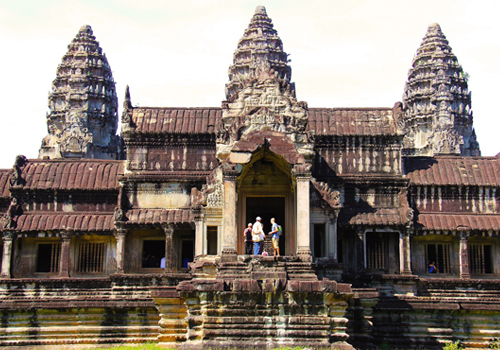

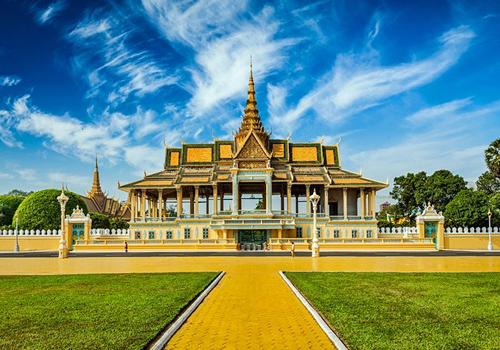
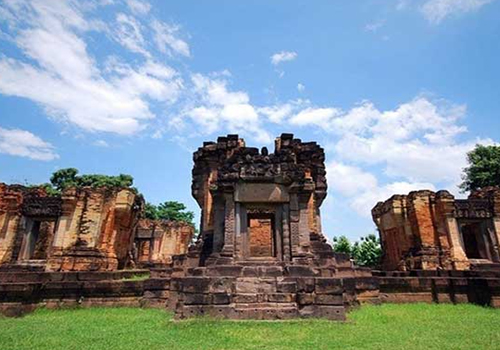
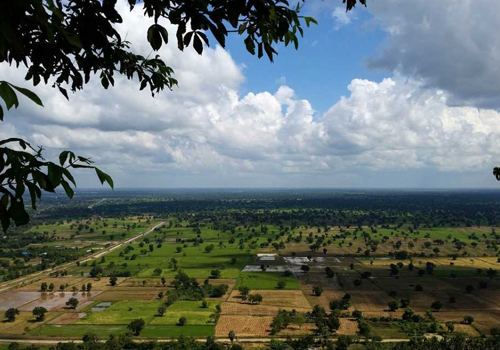
What Client Say




